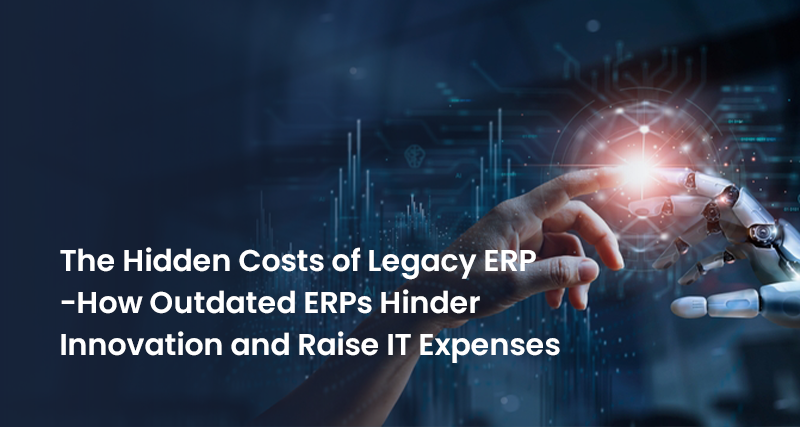
The Hidden Costs of Legacy ERP-How Outdated ERPs Hinder Innovation and Raise IT Expenses
In a business environment that is changing quickly today, the ability to be innovative and adapt promptly is essential for success. However, many firms are hampered by antiquated Enterprise Resource Planning (ERP) systems which used to be the backbone of their operations. These legacy ERPs can still run but they come with some hidden costs which can gravely impede an organization’s innovativeness as well as its cost-effectiveness. This blog post investigates into these costs associated with legacy ERP systems’ stifling innovation and increasing IT overheads.
Hidden Costs of Legacy ERP Systems:
Maintenance and Support Costs
Legacy ERP systems often require extensive maintenance and support to keep them running.
Integration Challenges
Modern businesses rely on a variety of software solutions to manage different aspects of their operations. Nevertheless, there are several problems brought about by legacy ERPs designed without considering modern integrations.
Lack of Flexibility and Scalability
Today’s enterprises need scalable enterprise resource planning systems that will grow with them as they develop.
User Experience and Productivity
Such contemporary ERP suites provide users with friendly user interfaces plus more features meant to increase productivity.
How Legacy ERPs Stifle Innovation:
Inhibited Agility
Innovation requires agility—the ability to quickly respond to market changes, customer demands, and emerging opportunities. Organizations find it hard to change fast because traditional monolithic ERP architecture is too rigid for this purpose.
Resource Drain
Significant resources like time and money are required in maintaining outdated systems, diverting attention from focus on innovative initiatives. Less capacity exists for organizations tied down by dated technology’s upkeep investments in new projects, technologies or business strategies.
Data Fragmentation
Innovation thrives on data-driven decision-making. It can prove difficult accessing total real-time data because legacy ERPs sometimes create data silos. This fragmentation limits the ability to gain actionable insights and make informed decisions that drive innovation.
Barriers to Digital Transformation
Staying relevant and competitive in today’s business environment necessitates digital transformation programs. However, they become barriers to change as they might not interact with the latest digital tools or technologies. Thus, organizations without modern ERP systems struggle to experiment with emerging concepts like artificial intelligence, machine learning or advanced analytics.
The Solution: Modern Cloud ERP Systems
Switching to a modern cloud ERP system such as Oracle NetSuite can help mitigate many of these legacy ERP challenges. The following are offered by cloud-based ERP:
Cloud ERPs can scale with your business and adapt to changing needs, supporting innovation and growth.
With cloud ERP, the vendor handles maintenance, updates, and security, reducing the burden on internal IT teams.
Modern cloud ERPs offer robust security features and compliance with the latest regulations.
Cloud ERPs provide real-time data access and advanced analytics enabling data-driven decision-making.
Intuitive interfaces and advanced functionalities enhance productivity and user satisfaction.
Conclusion
Although legacy ERP systems will continue running, their hidden costs can cause great effects on an organization’s innovativeness and cost effectiveness. By recognizing these hidden costs and transitioning to a modern cloud ERP system, businesses can unlock new opportunities for growth agility and innovation.
The importance of investing in an ERP that can be scaled, is flexible and integrated cannot be overemphasized in the ever-changing business world.
Do you want an Oracle NetSuite Cloud ERP implementation partner for your entity? For example, if your company needs cloud ERP solution provider as one of the best NetSuite Solution Providers like SoftCore Solutions, what do you do?